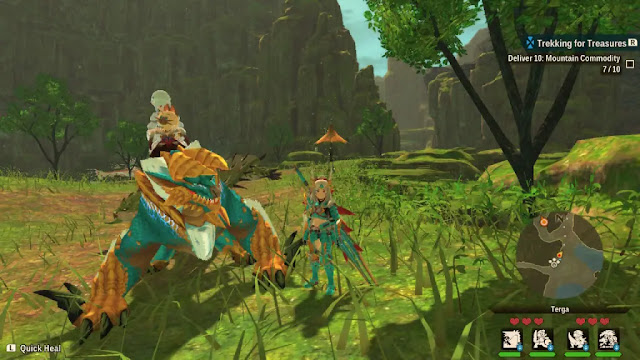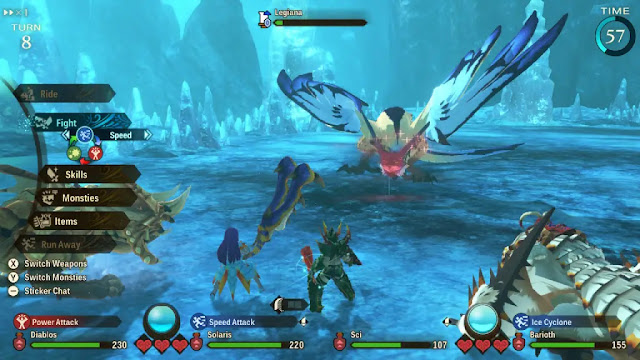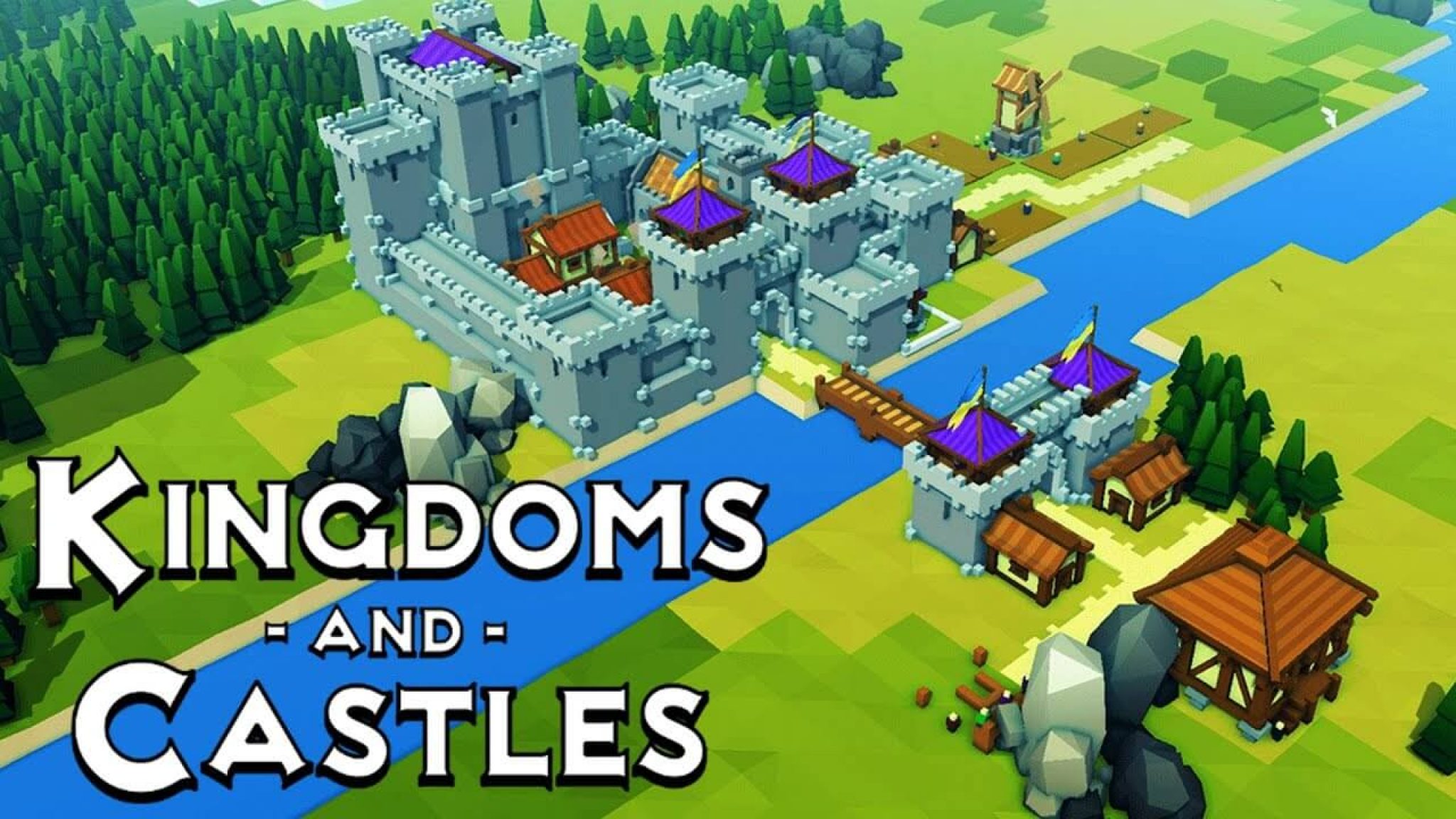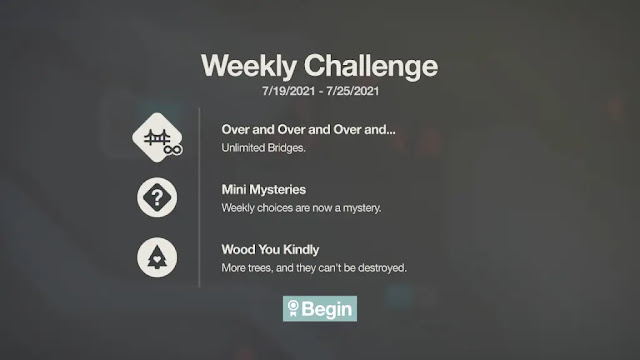Monster Hunter Stories 2: Wings of Ruin by
developers
Capcom,
Marvelous
and Publisher
Capcom—
Nintendo Switch review by
Richard
with a copy provided by the publisher.
Estimated reading time: 13 minutes
Monster Hunter Stories, a spinoff that
originally came out in 2016, now has a sequel as Monster Hunter Stories 2:
Wings of Ruin. Derived from the fact that people were complaining of no story
in the Monster Hunter franchise, you can be certain that this spinoff
installment, which is more turn-based RPG than action like the main series,
will have that focus on worldbuilding you may have felt lacking in the main
series.
MHS2:WoR tells the tale of a young and
upcoming Monster Rider, which is a sort of counterpart to the Monster Hunters,
and their induction as a Rider on Hakolo island. A Monster Rider is someone who
forms a bond with a monster and rides them into battle. That's right , you can
ride the monsters. Unfortunately, mysterious happenings, a great red light, and
all the rathalos leaving the island means that you need to step up to the
plate. As the grandchild of a famous rider, you have some pretty big shoes to
fill.
MHS2 acts much like a more traditional
RPG, featuring turn-based battles, monster collection and training, leveling
through earning exp, and exploring around the field map picking up items. Let's
start with the exploration aspect. You can bring five monster companions along
with you to explore the world. Later in the game you can unlock a sixth slot.
Every monster you can acquire can be ridden, and each monster has a riding
action. The actions can be as basic as "discovering harvestable
plants", or something like "climb ivy". You can hop on your
monster companion and swap out your lead monster easily on the field map in
case you want a different ride or riding skill. While exploring around the
different locales you come across, there are a number of things to note.

First of all, monsters will be roaming
around that you can get in fights with. Second thing you'll probably notice are
grey or golden caves dotting the landscape. You may also notice ground burrows
or jump pads, as well as possibly herbs, berries, bugs, and honey around. You can
pick up those last few by the way, which will be useful in crafting items, a
function that you can use when not in battle to stock up on handy items. The
ground burrows and jump pads are riding skills that you will require a certain
monster to use. Riding skills are shared across monsters, and each monster will
always have the same riding skill. For instance, a Velocidrome gets the jump
ability. Zinogre will also get the jump ability.
I'd like to point out that there are a
ton of ridable monsters in the game. Excluding the DLC monsters, there are more
than 80 collectible monsters to ride and bring into battle. You can collect
monster eggs to hatch in one of two ways: dens or forcing a retreat. Those grey
and golden caves dotting the landscape? Those are randomly spawned monster
dens. Inside you will find a usually short area with a nest at the end. You can
collect an egg from the nest. The eggs obtained this way are random, although
you can tell what you'll get from the pattern on the egg.
You can only take one egg out with you,
but you can keep trying until the nest runs out of eggs. The other option is to
defeat a monster and hope that it runs away. There are special actions you can
take in battle to boost retreat rate that are dependent on monster, or you can
throw a paintball which will give a 55% chance assuming the monster can be
ridden. If the monster runs away, a new den will appear on the map, and marked
for your convenience, and when you collect from there the only eggs you get
will be those of the monster that retreated.

As you collect eggs, they may produce a
yellow or rainbow glow. This is an indicator of a monsters gene pool. That's
right, you wouldn't expect a monster collection game without something like
this, right? Each monster has a 3 x 3 grid of genes that are randomly allocated
to locations on the grid, and randomly decided. There are some genes that
always com attached to a monster. For example, a Zinogre will always have
Thunderbug Strike. A zinogre could, however, have a Thunder attack increase
gene, or it may not.
For the grid, some of the nodes on the
grid may be locked. These can be either unlocked through leveling the monster,
or through using a "ritual item". Fun fact, despite the appearance of
the menu option, it is always available once you can channel a monster, and
doesn't require unlocking. Channeling allows you to transfer genes from one
monster to another. This gets rid of the monster you are transferring from, but
lets you put the gene in a new monster. If you line up a row, column, or
diagonal of same types in the grid, you get a bingo bonus for that typing. More
lines mean more bonuses.
So now that we've gone over the breeding
process, let's talk about the actual fights. As mentioned earlier, fights are
turn based where you and your opponents choose attacks. This plays out fairly
traditionally, but with a couple of neat aspects. First up is that you and your
monster companion share three hearts. Each time one of you get knocked out you
lose a heart. Lose all three and you get taken back to town. Combat itself is
performed by selecting either an attack type or skill. Now, those of you
familiar with monster hunter are probably aware of the three damage types:
slash, pierce, and blunt. Enemies have different parts that can be broken, and
each body part and monster will have different resistances and weaknesses to
certain damage types.

Monsters will also have elemental
affinities, both in attack and weakness. You can forge weapons and armour out
of monsters to give skill effects and elements for combat. In addition to this,
MHStories has a sort of rock-paper-scissors aspect in the form of: speed, tech,
and power moves. If you and your opponent use a move and you use the type that
beats it, you'll do more damage and they will do less. If both you and your
monster use the same type of attack and beat your opponents attack, you use a
combination move that deals heavy damage and cancels the opponents attack. As
you and your monster attack, you build up a kinship gauge. This gauge allows
you to use skills, command your monster, and when it's full you can ride your
monster and unleash a devastating attack.
A very large aspect of MHS2 is being able
to hit your enemies for damage types that they are weak to. There are six
weapon types, and there are two each per damage type. Great Sword and Sword and
Shield are slashing, Hunting Horn and Hammer are Blunt, and Bow and Gunlance
are pierce. You can equip up to three weapons at once that can be used in
battle. The weapons you bring along can be swapped between once per turn, just
like your monsties (monster companions). These are free actions too, meaning
you can swap monstie, swap weapon, and still attack in the same turn, but only
once. Throughout the course of the game you may also have buddies assisting you
in battle. You can combo with other riders monsties, and they can combo with
yours. Fair warning though, while this does result in increased damage output,
sometimes your ally AI can be really dumb. And I do mean REALLY dumb. Always
attacking with the losing attack type, always using skills that aren't
effective, attacking body parts that are resistant to the damage type. Hoo boy.
As you beat up the affronting creatures,
you will collect with which you can forge weapons and armour. This gear can
then be upgraded to do more damage or defense. You can also purchase some gear
from the Melynx merchant for bottlecaps. These items can be found in everdens,
through completing sidequests, and from participating in online multiplayer
battles. Let me just say this: the multiplayer is surprisingly great. I tried
out the multiplayer with a friend and fellow hunter, and managed to do some
science, just for you guys and girls, so let me tell you about what I've
learned. In multiplayer mode you can only bring three monsties along, and so
can a friend. You have two option for multiplayer content: PvP and questing.
PvP is pretty self explanatory, as you have to finish a rider battle before you
unlock multiplayer. You can adjust the rules slightly, but it's pretty much the
same fare. During your questing, you are generally tasked with defeating a
monster or exploring a den.

The synchronization between the two
players is really good with this. Once you and your friend are in, you can
explore the area together or individually. If one of you enters a fight, a red
circle will appear, and if the other player runs into the red circle, they will
join the fight, even if that is halfway through the fight. Two handy facts we
noticed: weakness is shared, and you can do your partners head to head for
them. What I mean on the first point is that if you target an enemy with a
damage type, the game will record whether the damage type is effective or not
and show you when targeting. In multiplayer, your teammate can see the damage
type ratings you reveal and vice versa. The head to head are sort of like mini
commands, such as mashing the A button. In multiplayer you can give input as
well as your friend. Not sure if this is intended or not, but right now it's a
thing. The game will also tell you what moves your buddy is using, helping you
to adjust your strategy. Once you and your buddy have reached a nest, you can
harvest an egg. Neat fact, you can see each others eggs. Once one, or both, of
you have finished the quest requirements, you are returned to the quest board.
In true monster hunter tradition, the
soundtrack is amazing again. Never have I been disappointed in a Monster Hunter
soundtrack, and I don't think I ever will be. The area and village themes are
both thematic and well orchestra'ed, and the battle themes get you pumped up
for a fight. The graphics are also a really fitting style, as the game focuses
more on riding sized monsters instead of the murderous beasts of the main
franchise, opting for a bit of a softer tone maybe, but one that fits the style
and narrative quite well.
Before wrapping up, I'd also like to go
over a few miscellaneous notes that I've picked up on through my play time. The
main game is fairly lengthy, as I was sitting at about 63 hours of play time.
We'll start with the positive notes. There is also the post game content to
consider as well, making MHS2 a fairly lengthy game. There are tons of
available monsters in the game, with over 80 as a base that you can ride. There
are plenty to get, train, and find the ones you like the best. Everdens, which
will probably be a big source of bottlecaps, will be labeled as "cleared
den" on the map when you have opened all the chests in them. The kinship
skills are usually quite cool, and I really enjoyed watching all of them,
although the subspecies don't really get a new skill.

The rock-paper-scissors format, while
usually overdone and a little basic, fit really well in this case when coupled
with both the damage types and elemental affinities. It added that depth that
simple rock-paper-scissors style combat doesn't normally afford, making combat
feel a lot smoother and more enjoyable. If you are high enough level, you can
also quick kill enemies when you get in a fight, provided you have beaten them
at least once before. This is great for farming materials for weapons and
armor. Since you will be constantly getting new eggs, the developers have also
introduced a system where any monster in your party under your player level
gets bonus exp until they hit your level. The amount varies depending on level
difference, but this makes it incredibly easier to train a new monster late
game up to equivalent level.
This great title isn't without its faults
however. First and foremost, the ally AI tends to be unconscionably stupid.
It's…manageable to an extent but sometimes it was migraine inducing how dumb it
can be. The field monster collision hitboxes are way too small for monster
size, which really broke the immersion for me something fierce. Monsters will
have a typing, and will tend to obey that typing. I.e. a Tigrex is a speed
monster, and should usually use speed moves. Unfortunately the game has
occasional droughts of certain typings. Nominally speed types early game and
tech types later. Tons of power types though. You also have a silent ish
protagonist, relegating all your decisions to Navirou, a rather annoying Felyne
who speaks for you, even if undesired. My biggest gripe may be the amount of
reused assets though. Every non major area is a combination of the same rooms
just mashed into a larger zone. You will notice this really fast, and it made
me significantly less inclined to explore anything, had there not been new
randomly generated chests in the dens each time.
As some non attributed asides, there are
a few hidden aspects the game doesn't particularly tell you, like surviving at
1 HP if riding and taking enough damage to knock out. At least I don't recall
it mentioning that. Also. the ritual option under channeling appears locked but
it isn't. The explanation of Navirou's "egg appraisal" is also fairly
vague. Since your character is custom created, the developers though it would
be good to make flashback scenes of your grandpa have the same eyes. This can
lead to some hilarious moments.
Summary
Overall, I have to say that Monster
Hunter Stories 2: Wings of Ruin of a wonderful experience. With a well done
battle system, plenty of monsters to collect, tons of gear to make, and some
great music to match, there's not a lot to complain about. The multiplayer is
extremely well put together for a turn-based system, and there were a bunch of
little aspects, like unique egg coloring and the ability to see what other coop
players eggs are that show just how much attention went in to the title.
While it may suffer from some reused
assets and questionable AI choices, most complaints are fairly surface level in
nature. Monster Hunter Stories 2: Wings of Ruin shouldn't be treated as
"just a spin-off", but has earned a right to its place amongst the
powerhouses of the franchise.
Score: 9.5 / 10


















































